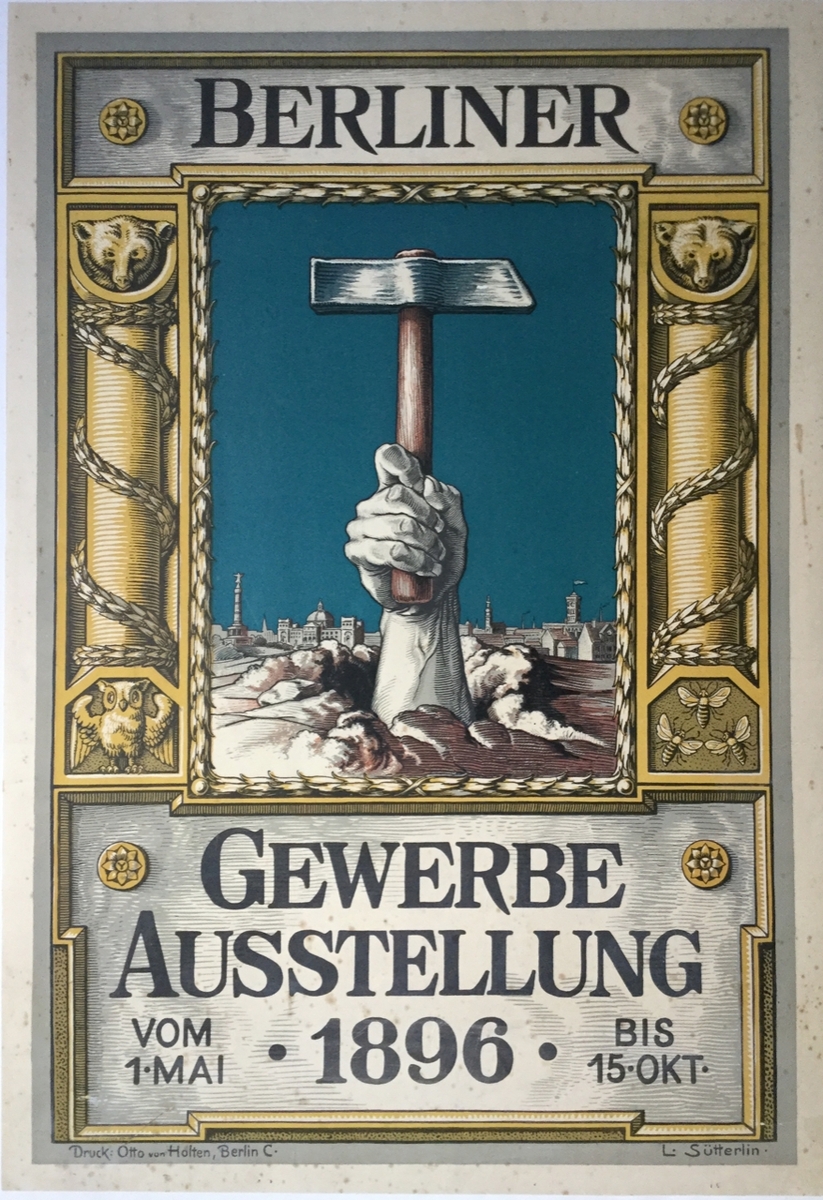Source

Source: Poster, artist: Ludwig Sütterlin, 1896. https://commons.wikimedia.org/wiki/File:Plakat_Suetterlin96.jpg
The organizers of the Berlin Industrial Exhibition [Berliner Gewerbe-Ausstellung] commissioned a poster to promote it. In the previous decade, poster designs that promoted exhibitions had been almost universal in blending classical allegorical figures with an abundance (or even excess) of symbolism and ornate scrolling. This design by Ludwig Sütterlin, on the other hand, stripped down much of the excess to offer a single, compelling image: a hand, grasping a worker’s hammer, bursting forth from the very ground of Berlin. It is a powerful and gripping image, and 150,000 copies of it were printed. Sütterlin’s “Hammer Poster” [Hammerplakat], moreover, was reprinted in graphic design and advertising handbooks for decades. It was thus often riffed on by other poster designers and advertisers, but also by humor magazines and caricaturists making a variety of points. Sütterlin’s poster proved enormously influential in German graphic design, advertising, and in many other forms of visual culture as well. It became a potent allegory of the new Germany’s place in the world—as a power bursting forth from obscurity to command attention.

Source: Poster, artist: Ludwig Sütterlin, 1896. https://commons.wikimedia.org/wiki/File:Plakat_Suetterlin96.jpg
Wikimedia commons